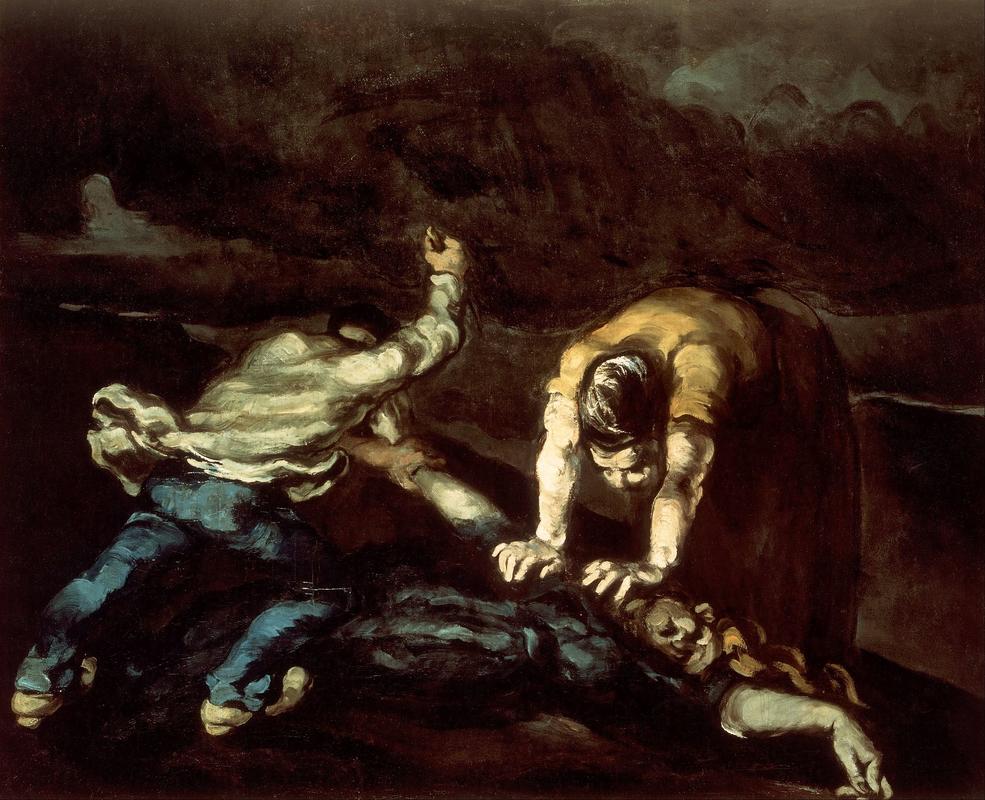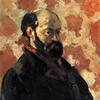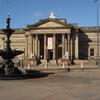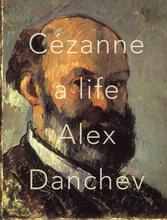More about The Murder
- All
- Info
- Shop

Contributor
Cézanne is usually more of a landscapes guy, but The Murder is good too, I guess.
Before Cézanne found out about landscapes and still life paintings with fruit, he was super into Old Masters like Gericault and Velazquez, whose content was considerably darker than his. They were all about death via cannibalism (i.e. Raft of Medusa) and deformed babies (i.e. Las Meninas) and Cézanne, at least later in his career, was not. The Murder, much like my seventh grade side bangs, was a phase that Cezanne grew out of. There is a watercolor copy of this piece in a private collection somewhere, but murder really wasn’t Cézanne’s thing.
The murderers in this piece are the man that is about to issue a final blow, with his back turned to us, and the woman who is using all of the strength she has to hold the victim down. It’s all very barbaric. We can’t see either of the murderer’s faces, which puts a lot more emphasis on the victim’s face, which is distorted with an extreme amount of pain and fear. The scene of the crime is dark and spooky, which is a little unoriginal on Cézanne’s part but it was early in his career so we’ll let it slide.
It’s not definite what the inspiration for this work was, but it could have been Thérèse Racquin a novel by Émile Zola. In the novel, a woman is married off by her aunt to her frail, sickly cousin. When the protagonist meets her husband’s hot friend, they start a wild love affair that ends with the two of them killing off the husband. He had it coming though, so don’t fret. Around the time that this painting was made, there were illustrations in popular newspapers in the same style. It’s possible that Cézanne snatched the style for himself and incorporated it into this work. I’m still partial to his still lifes with fruit like this one.
Sources
- "The Murder, 19Th Century." Liverpoolmuseums.org.uk. Web. 22 Oct. 2018. http://www.liverpoolmuseums.org.uk/walker/collections/paintings/19c/ite…
- "The Murder - By Paul Cezanne." http://www.paulcezanne.org. Web. 22 Oct. 2018. http://www.paulcezanne.org/the-murder.jsp
- Winter, Anna. "Thérèse Raquin By Emile Zola | Book Review." the Guardian. N.p., 2010. Web. 22 Oct. 2018. https://www.theguardian.com/books/2010/aug/01/therese-raquin-emile-zola…












